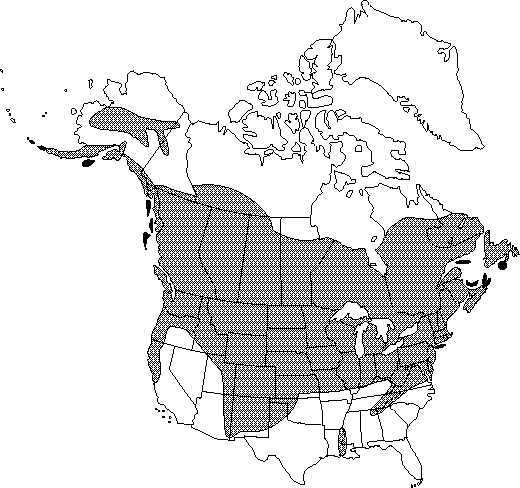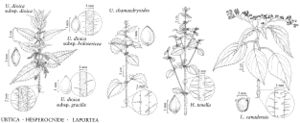Urtica dioica subsp. gracilis
Svensk Bot. Tidskr. 41: 271. 1947.
Stems glabrous or strigose, with a few stinging hairs. Leaf-blades abaxially bearing stinging hairs, otherwise glabrous or puberulent, adaxially without or rarely with a few stinging hairs. Flowers unisexual, staminate and pistillate mostly on same plant. 2n = 26, 52.
Phenology: Flowering late spring–summer.
Habitat: Alluvial woods, margins of deciduous woodlands, fencerows, waste places
Elevation: 0-3100 m
Distribution

St. Pierre and Miquelon, Alta., B.C., Man., N.B., Nfld. and Labr. (Nfld.), N.W.T., N.S., Ont., P.E.I., Que., Sask., Yukon, Ala., Alaska, Ariz., Calif., Colo., Conn., Del., Ga., Idaho, Ill., Ind., Iowa, Kans., Ky., La., Maine, Md., Mass., Mich., Minn., Miss., Mo., Mont., Nebr., N.H., N.J., N.Mex., N.Y., N.C., N.Dak., Ohio, Okla., Oreg., Pa., R.I., S.Dak., Tenn., Tex., Utah, Vt., Va., Wash., W.Va., Wis., Wyo.
Discussion
Native Americans used Urtica dioica subsp. gracilis medicinally for rheumatism, upset stomach,childbirth, paralysis, fevers, colds, tuberculosis, and as a general tonic, and as a witchcraft medicine (D. E. Moerman 1986).
Selected References
None.
